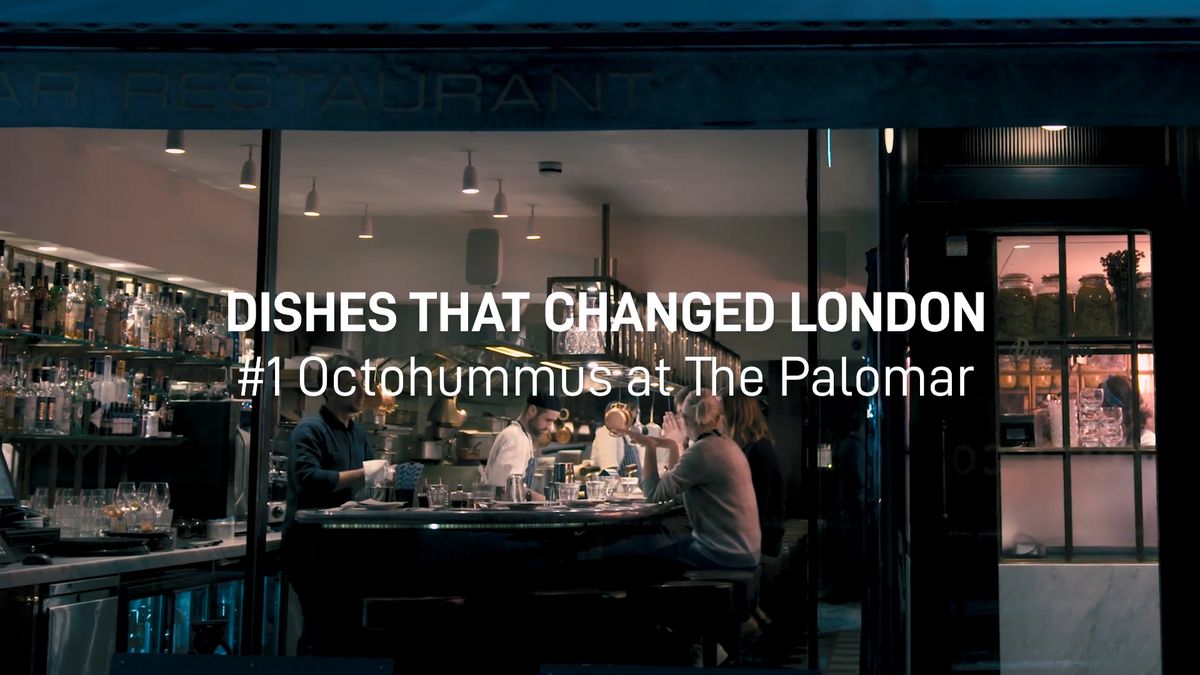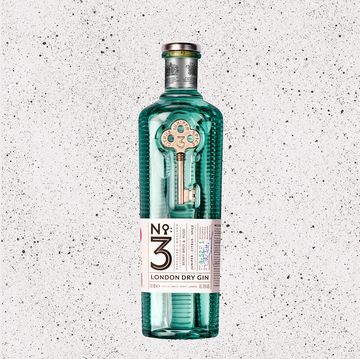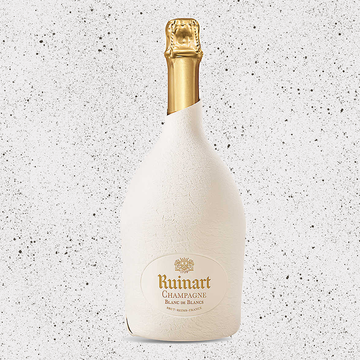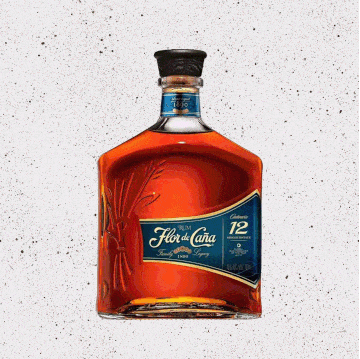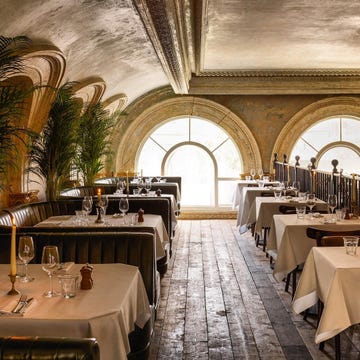The dregs of the world are here, unsifted. It is Port Said, Shanghai, Barcelona and Sydney combined. Now that San Francisco has reformed, Marseille is the world’s wickedest port.” Basil Woon, author of the assuredly straight 1929 opus, A Guide to The Gay World of France, was obviously less than enamoured by this great southern city. “Thieves, cutthroats, and other undesirables throng the narrow alleys,” he gasps, “and sisters of scarlet sit in the doorways of their places of business, catching you by the sleeve as you pass by.” Definitely sounds like my sort of place.
Half a century later and things don’t seem any more salubrious. “Skag city,” growls Gene Hackman’s Popeye Doyle, in The French Connection II (1975), as he shoots his way past crumbling facades, festering alleys and streets greasy with grime and despair. Because Marseille is one of those cities that bears the brunt, albeit uncomplainingly, of eternal international infamy. MFK Fisher, one of America’s finest scribblers on food, visited often, and lived there for a while in the Seventies, too. Yet friends worried for her safety. A Scottish couple told her that people “had jokingly said before they left England, when they admitted they were going to Marseille, ‘How mad! Nobody goes to Marseille! But be sure to bring us a pocketful of Big H, if the bullets miss you! … some top quality fixes old boy!’” Très droll.
Marseille, though, is ruggedly tenacious, an ancient and ever-prosperous port, and France’s second biggest city, founded around 600BC, when Protis the Phocean leader first spotted a marshy cove, protected by two rocky outcrops, and thought it looked like a splendid place to set up camp. It survived countless invasions, from Greeks and Romans to Visigoths, Arogonese and Germans — the last of whom destroyed the Vieux Port in 1943 — plus endless sieges, attacks and plagues. Yet Fisher bemoans the indelible, seemingly eternal stereotype. “One of the most tantalising things about Marseille,” she writes in A Considerable Town, “is that most people who describe it… write the same things… the familiar line that Marseille is doing its best to live up to a legendary reputation as world capital for ‘dope, whores and street violence’. Apparently, people like to glance one more time at the same old words: evil, filth, dangerous.”
Just after noon, on the most brilliant blue of late autumnal afternoons, the evil seems far removed, whisked away on a brisk, crisp sea breeze. And the filth is more wear and tear than downright squalor while the only danger is the contemplation of that third glass of pastis. I’m sitting with my friend, chef and food writer Rowley Leigh, a man not given to praise, faint or otherwise. “But I love this place,” he admits. “It feels real, proper, vital and alive. It doesn’t pander to tourists, or give the slightest fuck what anyone thinks about it, either. Very much the Marseille way.”
We retreat back into comfortable silence, perched above the city on the terrace of the former 16th-century Hôtel-Dieu hospital, now a rather comfortable InterContinental hotel. Ahead of us looms the basilica of Notre-Dame de La Garde, where a gleaming and gilded Mary and Child gaze benevolently upon a city wedged between Mediterranean and Provençal hills. Below, the Vieux-Port, with its overpriced bouillabaisse and faded hotels, soap shops and neat rows of tiny boats.
The port may have changed since the days of Dickens, but the faces of every hue, the “Hindoos, Russians, Chinese, Spaniards, Portuguese, Englishmen, Frenchmen, Genoese, Neapolitans, Venetians, Greeks, Turks, descendants from all the builders of Babel” he describes at the start of Little Dorrit, still loom large. As a gateway to the south, Marseille always attracted folk: Greeks, Italians, Armenians, Vietnamese, Corsicans and North Africans — Saharan Africans, pieds-noirs from Algeria and Maghrebis, too. A merry old mix, to say the least.
It also means a decent lunch. We leave the hotel, and puff up the narrow streets, looking back and out to sea, over Dumas’ “gloomy fortress”, the Château d’If, “which seemed to Edmond Dantès [aka The Count of Monte Cristo], ‘like a scaffold to a malefactor’”. We wander up the hill past loitering youths, north African and Caucasian alike. Their tracksuits, pristine white trainers and sullen stares are easily interchangeable, but they’re bored rather than bullish. The city has edge, sure, but that’s rather different from outright hostility. In dark corners, the occasional prone body stirs under stained blankets, and drawn faces are briefly illuminated by the flare of a lighter; and sometimes, the stench of old piss assails the nostrils. These people, the usual underclass of any large city, though, are too enmeshed in their own lives to care much about the swaying gait of two greedy tourists.
Anyway, “the actuality of Marseille and its reputation are chasmically apart,” according to brilliant polymath iconoclast Jonathan Meades, who has lived here, in the Le Corbusier-designed Unité d’Habitation — which the architect called “La Cité Radieuse” — for some years. “The crime is mostly gang warfare between competing drug gangs whose grasp of economics is imperfect: if everyone is a dealer where is the demand going to come from?” That said, it’s not the sort of place that suits a swagger. If you went looking for trouble, you wouldn’t have to venture far. Nor is it a city in thrall to the tourist buck. “We moved here because we found an enormous flat,” Meades continues. “The city, slow to reveal itself, is kind of lovable. Forget the wild side, the area where we live is about as edgy as St John’s Wood.”
Pizzaria Chez Etienne, with its wood- burning oven, faded pictures of Syracuse and photos of stars unknown, may seem Italian, but it’s Marseillaise, no doubt about that. We briefly consider pieds et paquets, that classic dish of Marseilles involving stuffed sheep’s tripe and trotters. I expect Rowley to leap upon it, as some chefs tend to do when faced with stinky offal. But no. “Way too shitty for me,” he says. A happy escape.
We order pizza; pizza that would make a Neapolitan weep tears of anger. The first has a crisp, thin crust slathered with a good inch of sweating anonymous cheese. Plus olives. It’s joyously greasy, magnificently salty and honking of raw garlic. “A Frenchman’s view of Italian food,” Rowley says between bites. “Or rather, Marseille-style pizza. And that raw garlic — it’s a very Marseille thing.” The other pizza is covered with an intense tomato sauce and studded with anchovies. Again, the flavours sit between the bold and the downright pushy. Salad comes drenched in a thick, muscular dressing, while just-chewy supions (baby squid), cooked with a learned hand, wear more garlic still. In Marseille, flavours are as bold as those scarlet-clad brasses.
Meades is a fan. “Their pizza is superior to the ‘authentic’ Neapolitan things. And the Marseille version veers towards a tarte fine. Excellence beats authenticity hands down. That pizza, plus supions, pieds et paquets, panisse (fried rounds of chickpea batter) are the great dishes of Marseille. And fish soup, the simple stuff.” Certainly not bouillabaisse; most definitely not.
But bouillabaisse, I hear you cry, is surely the great dish of Marseilles, its defining delight. One can barely move an inch without being peddled the “authentic” or “best in town”. In fact, this is the one tourist trade that is embraced with genuine gusto. “Bouillabaisse,” they whisper and cajole as you walk through the port. “You like soup, very good price.” It’s certainly not cheap, with prices starting at €30 per person. A rather regal price for a one-pot dish made by fishermen at the end of the day to use up all the random bits and pieces they couldn’t sell.
“The true one comes from Marseille,” writes Austin de Croze in Les Plats Régionaux de France. “For is it not in the waters of the beautiful bay of Marseille that all of the requisite varieties of brilliant-hued rock fish, which go to make up the excellence of a bouillabaisse, are to be found.” Everyone seems to agree that rascasse (red scorpionfish), a coarse, ugly, vicious-looking little beast, is an essential ingredient. Along with as many kinds of Mediterranean fish as the cook can get his paws upon. Plus olive oil and saffron and bread. The dish must be rapidly boiled (the name comes from a compound meaning to simmer), to emulsify the stock and oil. The fish is served first, usually, then the broth over bread. It is not “intended to be a soup,” stresses Elizabeth David in French Provincial Cooking. “There should merely be enough of the broth to produce a generous amount of moistening for the slices of bread.” That said, she wasn’t overly enamoured: “I would not myself think it a great deprivation if I were told that I could never again eat a bouillabaisse….”
Richard Olney, writing in The French Menu Cookbook, describes it as “more a philosophy than a culinary preparation.” And there’s certainly enough hot air spouted about the damned dish to float a whole barrage of balloons. Purists will argue every aspect. They always do. Whether the bread should be toasted, or rubbed with garlic. And about the addition, or not, of tomatoes, potatoes, white wine or mussels; heresy to some, gospel to others. As to the langouste, that ethereally sweet local crustacean thug, there are two schools of thought, says Waverley Root in The Food of France. “One is, a man who would put lobsters in bouillabaisse would poison wells. The other is, a man who would leave it out would starve his children.”
It is, admits Olney, “terrifyingly soporific.” Indeed, one of the many vivid tales as to its inception involves Venus, Vulcan and Mars. Venus created it to send Vulcan to sleep, so she could bugger off for a little ooh la la with Mars. Meades, though, has little time for the stuff. “Bouillabaisse is an old Provençal or maybe Occitan word which translates as, ‘we saw you coming, mush.’ It is certainly a massive disappointment, preposterously expensive and consumed almost exclusively by tourists. There is a thing called ‘the bouillabaisse charter’ — think gothic script on leatherette. This is essentially a price-fixing agreement among a number of allegedly gastronomic restaurants.”
Still, as tourists, this supposedly blessed broth should at least cross our lips. But rather than keeping ourselves to street level, we aim for the stars, three Michelin to be precise, at Le Petit Nice. It’s a little out of town, past the Plages des Catalans, the beach where Doyle, porkpie hat on head, leered over the local ladies. It’s dark now, the sea below us is as black as olives. In the glare of the floodlights, fishermen cast from the honeyed rocks. I have little time for the usual flourishes and excesses of the three-star firmament, but the cooking here is exceptional.
“Bouille-Abaisse” is the famous set menu, a “deconstructed” (yuk!) version of the dish. The descriptions may be trite, (‘Shallow Waters”, “Deep Seas”, ‘The Abyss”), but the skill and flavours are anything but. The sweetest slivers of shellfish in a concentrated, but blissfully clean, saline juice that tastes of mermaids’ sighs. And a tomato consommé of startlingly sublime intensity. Gérald Passedat, the chef proprietor, is a local and sure knows how to coax out flavour. Even Leigh is impressed. We end with a simple bowl of dirty, rust-coloured broth. It has a sonorous, full fathom five profundity, with the merest smirk of depravity, plus a whisper of chilli, nudge of bitter orange peel and the slow moan of saffron. If the preceding courses were about dainty mermaids, then this is Poseidon’s punch. “Well, there we go,” says Leigh. “You won’t find better than that.” He’s right. Call it what you will, it’s a pretty decent fish soup.
Why is food so good here? wonders MFK Fisher. “I think it’s because of the peculiar liveliness of what grows behind it on the ancient soil, and especially what swims and creeps and slithers at its watery gates.” Exactly. The next morning, we wander through the market in the port; well, more a scrappy collection of tables selling a scrappy collection of fish. Mainly rascasse, rouget (red mullet), sardines, sole and dorade (gilt-head bream). Polystyrene boxes seethe with tiny swimmer crabs (another staple of soup) while conger eel leer and grey mullet gasp their last. There’s no hard sell here, no flashing of wares, save the occasional half-hearted cry. It’s an age-old scene, but one that takes place in the shadow of Norman Foster’s L’Ombrière, a brilliant modern structure, which sits a large rectangular mirror, as thin as a razor’s edge, upon eight pillars. It gleams proudly, glinting with sun and sea, adding a 21st century shine to an otherwise ancient port.
A quick pastis, then a typically grumpy taxi ride, down the great La Canebière, (“a street,” according to Alexander Dumas in The Count of Monte Cristo, “of which the modern Phoceans are so proud that they say with all the gravity in the world… ‘If Paris had La Canebière, Paris would be a second Marseille’”). And on to the Modernist masterpiece Unite d’Habitation, started in 1947, and perhaps the great proto-Brutalist work. With stained glass windows by Picasso, it has charm, and curves, and visions of a future that never was. The view from the top takes in everything — yellowing concrete tower blocks, terracotta-tiled villas, the starkly white lines of the velodrome, the trams, buses and far off hills. Marseille sprawls, with no particular rhyme or rhythm. It does as it pleases. Rather like its inhabitants. A city apart, and alone.
We take the bus back, down wide avenues, lined with stalls selling nylon knickers and mismatched shoes. And across town, close to the sea, past the Catalan beach once more, and down a set of steps to L’Epuisette, a one-star Michelin place with a corrugated iron roof. There’s the usual faffing about napkin folding and pointless pomp. Some Michelin places just can’t help themselves. The food is modern but assured, the flavours as fine as the technique: plump langoustines in silken pasta; burnished sweetbreads with small cubes of apple jelly. A sensational piece of John Dory, gleefully fresh, and the chef’s take on pieds and paquets, pretty “paquets” of rouget, and slow-braised ribbons of squid. We pick at stinky cheese and drain the remains of a Clos Ste Hune Riesling.
A kip beckons, but before that, a stop at Maison Empereur: “Maison de qualité reconnue dans les univers Quincaillerie, Droguerie, Coutellerie, Arts Culinaires depuis 1827.” It’s an emporium of rare charm and depth, selling everything from brass madeleine moulds to meat grinders, terrines, copper pans, cleaning products, wire wool, household jackets, knives, cocottes and gadgets that slice the ends off eggs. We stock up on essentials we don’t need, then wander back through a working market, where old men sit and gossip, sipping cups of mint tea, while stout ladies elbow their way through the crowds. The usual smoking youths loiter with intent, watching everything and nothing.
Leigh is in heaven, at its spread of fish (over 10 kinds of white fish alone), and the relative value. “No tourist tat, just a working market for people who actually bloody cook each day.” Indeed, the haggling is fierce. “This is how France should be,” he declares with a regal sweep of his arm. We stop by a tired bar and order a beer. A cadaverous man, shaking, ancient and limping shuffles in. The barman, while hardly acknowledging him, unthinkingly pours a measure of cheap whisky into a smudged glass, and tops it up from a plastic bottle of Coke. The old man gulps it in one, leaves a clatter of coins on the bar, and hobbles out. We wander home, the light pouring away, to the sounds of bells, seagulls and the distant tinkle of trams.
Toinou is a stripped-back seafood temple, with the atmosphere of a canteen (you queue and pay before eating), but the firm-fleshed shellfish of piscine legend. The stall outside sells 20 varieties of French oyster, along with clams (four kinds), prawns (five types) and two sizes of sea urchin. We dip crusty bread into anchoiade, bracingly robust, and slurp sweet Belon oysters and sea urchins by the dozen. I ask if they have Tabasco. The waitress stops, stares at me. “Non!” she spits, as if I’ve just besmirched her father’s good name. Leigh just grins.
Night has fallen and the air is thick with the clink of glass, the fizz of gossip and clatter of metal on plate. We walk back to the port, to Le Souk. Moroccan food rarely fills me with delight, yet once again, the quality is remarkable. Fluffy couscous, fierce homemade harissa, well-spiced merguez, lashings of soupy chickpeas and a small leg of lamb, spoon soft. All sloshed down with a bottle of Moroccan Guerrouane red. Out to sea, the lights of the fishing boats wink. We totter home, to sleep the sleep of Dumas’ dead.
Chez Michel is thoroughly old school, no tasting menus here, or foams or cheffy fantasies. Nope, this is an upmarket bistro much loved by Fisher. From the outside it doesn’t promise much. Inside, though, with its polished marble floor, pristine linen tablecloths, lovingly buffed mirrors and proud display of gleaming fish, it instils hungry confidence. We order boiled prawns, then bourride (a fish stew with aioli). “One of the great dishes of Provence,” according to Elizabeth David, although from Sette, down the coast. It’s that, or the bouillabaisse. “No mucking about here,” says Leigh with glee.
First, we’re presented with the fish, dressed up like hopeful Thai brides. Weever, sea bass and conger. They’re whisked away to be cooked. They arrive back 20 minutes later, firm and just translucent, with a pile of steamed potatoes. Then the broth, fish stock thickened with aioli, thick as double cream and with an identical hue. The garlic flavour is strong, but not overwhelming, the soft sweetness of fish never far behind. If bouillabaisse is the fiery harlot, then this is the voluptuous courtesan, clad in fur coat and silk knickers. It smothers and seduces, a fish soup that leads, inevitably, to one’s bed. Magnificent but tiring all the same.
It’s our last lunch and we discuss Fisher. She talked about Marseille and its “insolite” nature, strictly translated as “contrary to what is usual and normal.” But she argued that’s not quite right. It’s a word that’s “mysterious, unknowable and, in plain fact, indefinable. As indefinable as Marseille itself.” A cross, perhaps between Gallic shrug and really couldn’t give a fuck. And like Fisher, even the fleeting visitor to this great city cannot fail to fall for her “phoenix-like vitality, its implacably realistic beauty and brutality.”
Marseille is proud but not arrogant, cultured without pretension, a city happy in its own skin. Plus it has food to make the taste buds stand to attention and belt out, well, the revolutionary words of “La Marseillaise”: “Aux armes, citoyens…” But not before a decent lunch.
“It’s a most congenial place to inhabit,” Meades says with affection. Why else would he live here? “Friendly in a way that Paris has never been and laid back in a way that London has never been. It’s also rather bolshie. It is to France what Liverpool is to England.”
But it’s a survivor, too. Of diseases and invaders, of “every kind of weapon known to European warfare, from the axe and arrow to sophisticated derivatives of old Chinese gunpowder” as Fisher put it.
And plagues, both natural and narcotic. “It is hard not to surmise,” she wrote, “that if a nuclear blast finally levelled the place, some short, dark-browed men and women might eventually emerge from a few deep places, to breed in the salt marshes that would have gradually revivified the dead waters around the old port.”
Marseille doesn’t demand your love. It doesn’t want it. But believe me, after even a few hours, you’ll be pledging your eternal troth. Forget heroin. Once Marseille’s in your system, you’re hooked for life.







